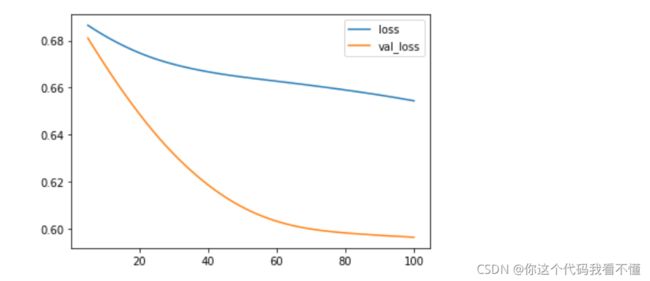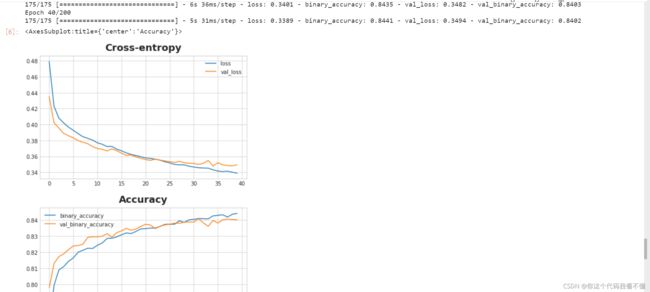Kaggle(L6) - Binary Classification & Notebook
Apply deep learning to another common task.
Introduction
So far in this course, we’ve learned about how neural networks can solve regression problems. Now we’re going to apply neural networks to another common machine learning problem: classification. Most everything we’ve learned up until now still applies. The main difference is in the loss function we use and in what kind of outputs we want the final layer to produce.
Binary Classification
Classification into one of two classes is a common machine learning problem. You might want to predict whether or not a customer is likely to make a purchase, whether or not a credit card transaction was fraudulent, whether deep space signals show evidence of a new planet, or a medical test evidence of a disease. These are all binary classification problems.
In your raw data, the classes might be represented by strings like “Yes” and “No”, or “Dog” and “Cat”. Before using this data we’ll assign a class label: one class will be 0 and the other will be 1. Assigning numeric labels puts the data in a form a neural network can use.
Accuracy and Cross-Entropy
Accuracy is one of the many metrics in use for measuring success on a classification problem. Accuracy is the ratio of correct predictions to total predictions: accuracy = number_correct / total. A model that always predicted correctly would have an accuracy score of 1.0. All else being equal, accuracy is a reasonable metric to use whenever the classes in the dataset occur with about the same frequency.
The problem with accuracy (and most other classification metrics) is that it can’t be used as a loss function. SGD needs a loss function that changes smoothly, but accuracy, being a ratio of counts, changes in “jumps”. So, we have to choose a substitute to act as the loss function. This substitute is the cross-entropy function.
Now, recall that the loss function defines the objective of the network during training. With regression, our goal was to minimize the distance between the expected outcome and the predicted outcome. We chose MAE to measure this distance.
For classification, what we want instead is a distance between probabilities, and this is what cross-entropy provides. Cross-entropy is a sort of measure for the distance from one probability distribution to another.
The idea is that we want our network to predict the correct class with probability 1.0. The further away the predicted probability is from 1.0, the greater will be the cross-entropy loss.
The technical reasons we use cross-entropy are a bit subtle, but the main thing to take away from this section is just this: use cross-entropy for a classification loss; other metrics you might care about (like accuracy) will tend to improve along with it.
Making Probabilities with the Sigmoid Function
The cross-entropy and accuracy functions both require probabilities as inputs, meaning, numbers from 0 to 1. To covert the real-valued outputs produced by a dense layer into probabilities, we attach a new kind of activation function, the sigmoid activation.
To get the final class prediction, we define a threshold probability. Typically this will be 0.5, so that rounding will give us the correct class: below 0.5 means the class with label 0 and 0.5 or above means the class with label 1. A 0.5 threshold is what Keras uses by default with its accuracy metric.
Example - Binary Classification
Now let’s try it out!
The Ionosphere dataset contains features obtained from radar signals focused on the ionosphere layer of the Earth’s atmosphere. The task is to determine whether the signal shows the presence of some object, or just empty air.
import pandas as pd
from IPython.display import display
ion = pd.read_csv('../input/dl-course-data/ion.csv', index_col=0)
display(ion.head())
df = ion.copy()
df['Class'] = df['Class'].map({'good': 0, 'bad': 1})
df_train = df.sample(frac=0.7, random_state=0)
df_valid = df.drop(df_train.index)
max_ = df_train.max(axis=0)
min_ = df_train.min(axis=0)
df_train = (df_train - min_) / (max_ - min_)
df_valid = (df_valid - min_) / (max_ - min_)
df_train.dropna(axis=1, inplace=True) # drop the empty feature in column 2
df_valid.dropna(axis=1, inplace=True)
X_train = df_train.drop('Class', axis=1)
X_valid = df_valid.drop('Class', axis=1)
y_train = df_train['Class']
y_valid = df_valid['Class']

We’ll define our model just like we did for the regression tasks, with one exception. In the final layer include a ‘sigmoid’ activation so that the model will produce class probabilities.
from tensorflow import keras
from tensorflow.keras import layers
model = keras.Sequential([
layers.Dense(4, activation='relu', input_shape=[33]),
layers.Dense(4, activation='relu'),
layers.Dense(1, activation='sigmoid'),
])
Add the cross-entropy loss and accuracy metric to the model with its compile method. For two-class problems, be sure to use ‘binary’ versions. (Problems with more classes will be slightly different.) The Adam optimizer works great for classification too, so we’ll stick with it.
model.compile(
optimizer='adam',
loss='binary_crossentropy',
metrics=['binary_accuracy'],
)
The model in this particular problem can take quite a few epochs to complete training, so we’ll include an early stopping callback for convenience.
early_stopping = keras.callbacks.EarlyStopping(
patience=10,
min_delta=0.001,
restore_best_weights=True,
)
history = model.fit(
X_train, y_train,
validation_data=(X_valid, y_valid),
batch_size=512,
epochs=1000,
callbacks=[early_stopping],
verbose=0, # hide the output because we have so many epochs
)
We’ll take a look at the learning curves as always, and also inspect the best values for the loss and accuracy we got on the validation set. (Remember that early stopping will restore the weights to those that got these values.)
history_df = pd.DataFrame(history.history)
# Start the plot at epoch 5
history_df.loc[5:, ['loss', 'val_loss']].plot()
history_df.loc[5:, ['binary_accuracy', 'val_binary_accuracy']].plot()
print(("Best Validation Loss: {:0.4f}" +\
"\nBest Validation Accuracy: {:0.4f}")\
.format(history_df['val_loss'].min(),
history_df['val_binary_accuracy'].max()))
>_ Best Validation Loss: 0.5965
>_ Best Validation Accuracy: 0.7619
Your Turn
Use a neural network to predict cancellations in hotel reservations with the Hotel Cancellations dataset.
Notebook
Introduction
In this exercise, you’ll build a model to predict hotel cancellations with a binary classifier.
# Setup plotting
import matplotlib.pyplot as plt
plt.style.use('seaborn-whitegrid')
# Set Matplotlib defaults
plt.rc('figure', autolayout=True)
plt.rc('axes', labelweight='bold', labelsize='large',
titleweight='bold', titlesize=18, titlepad=10)
plt.rc('animation', html='html5')
# Setup feedback system
from learntools.core import binder
binder.bind(globals())
from learntools.deep_learning_intro.ex6 import *
First, load the Hotel Cancellations dataset.
import pandas as pd
from sklearn.model_selection import train_test_split
from sklearn.preprocessing import StandardScaler, OneHotEncoder
from sklearn.impute import SimpleImputer
from sklearn.pipeline import make_pipeline
from sklearn.compose import make_column_transformer
hotel = pd.read_csv('../input/dl-course-data/hotel.csv')
X = hotel.copy()
y = X.pop('is_canceled')
X['arrival_date_month'] = \
X['arrival_date_month'].map(
{'January':1, 'February': 2, 'March':3,
'April':4, 'May':5, 'June':6, 'July':7,
'August':8, 'September':9, 'October':10,
'November':11, 'December':12}
)
features_num = [
"lead_time", "arrival_date_week_number",
"arrival_date_day_of_month", "stays_in_weekend_nights",
"stays_in_week_nights", "adults", "children", "babies",
"is_repeated_guest", "previous_cancellations",
"previous_bookings_not_canceled", "required_car_parking_spaces",
"total_of_special_requests", "adr",
]
features_cat = [
"hotel", "arrival_date_month", "meal",
"market_segment", "distribution_channel",
"reserved_room_type", "deposit_type", "customer_type",
]
transformer_num = make_pipeline(
SimpleImputer(strategy="constant"), # there are a few missing values
StandardScaler(),
)
transformer_cat = make_pipeline(
SimpleImputer(strategy="constant", fill_value="NA"),
OneHotEncoder(handle_unknown='ignore'),
)
preprocessor = make_column_transformer(
(transformer_num, features_num),
(transformer_cat, features_cat),
)
# stratify - make sure classes are evenlly represented across splits
X_train, X_valid, y_train, y_valid = \
train_test_split(X, y, stratify=y, train_size=0.75)
X_train = preprocessor.fit_transform(X_train)
X_valid = preprocessor.transform(X_valid)
input_shape = [X_train.shape[1]]
1) Define Model
The model we’ll use this time will have both batch normalization and dropout layers. To ease reading we’ve broken the diagram into blocks, but you can define it layer by layer as usual.
from tensorflow import keras
from tensorflow.keras import layers
# YOUR CODE HERE: define the model given in the diagram
model = keras.Sequential([
layers.BatchNormalization(input_shape=input_shape),
layers.Dense(256, activation='relu'),
layers.BatchNormalization(),
layers.Dropout(0.3),
layers.Dense(256, activation='relu'),
layers.BatchNormalization(),
layers.Dropout(0.3),
layers.Dense(1, activation='sigmoid'),
])
# Check your answer
q_1.check()
2) Add Optimizer, Loss, and Metric
Now compile the model with the Adam optimizer and binary versions of the cross-entropy loss and accuracy metric.
# YOUR CODE HERE
model.compile(
optimizer='adam',
loss='binary_crossentropy',
metrics=['binary_accuracy']
)
# Check your answer
q_2.check()

Finally, run this cell to train the model and view the learning curves. It may run for around 60 to 70 epochs, which could take a minute or two.
early_stopping = keras.callbacks.EarlyStopping(
patience=5,
min_delta=0.001,
restore_best_weights=True,
)
history = model.fit(
X_train, y_train,
validation_data=(X_valid, y_valid),
batch_size=512,
epochs=200,
callbacks=[early_stopping],
)
history_df = pd.DataFrame(history.history)
history_df.loc[:, ['loss', 'val_loss']].plot(title="Cross-entropy")
history_df.loc[:, ['binary_accuracy', 'val_binary_accuracy']].plot(title="Accuracy")
3) Train and Evaluate
What do you think about the learning curves? Does it look like the model underfit or overfit? Was the cross-entropy loss a good stand-in for accuracy?

Tips:
The accuracy rose at the same rate as the cross-entropy fell, so it appears that minimizing cross-entropy was a good stand-in(loss= ‘binary_crossentropy’).

Conclusion
Congratulations! You’ve completed Kaggle’s Introduction to Deep Learning course!
With your new skills you’re ready to take on more advanced applications like computer vision and sentiment classification. What would you like to do next?
Why not try one of our Getting Started competitions?
- Classify images with TPUs in Petals to the Metal
- Create art with GANs in I’m Something of a Painter Myself
- Classify Tweets in Real or Not? NLP with Disaster Tweets
- Detect contradiction and entailment in Contradictory, My Dear Watson
Until next time, Kagglers!
- 2021.10.21
- Kaggle深度学习入门系列教程完结撒花★,°:.☆( ̄▽ ̄)/$:.°★ 。
Next >> Bonus Lessons







